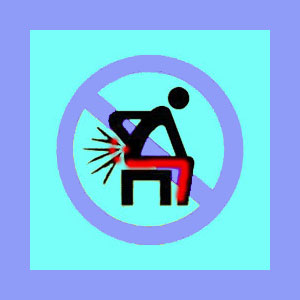
A sciatica lipoma is a small benign fatty tumor that is sometimes blamed for causing lower body nerve symptoms mostly through structural compression of neurological tissue. Lipomas are usually asymptomatic, but can cause pain and related health issues if they grow on or in certain anatomical areas, such as the spine or along the path of the sciatic nerve.
This article will examine the relationship between the occurrence of lipomas and the presence of a sciatica pain syndrome. We will explore how an exceptional lipoma may cause pain, tingling, numbness and weakness in the buttocks, legs and feet, as well as clarify the fact that most lipomas are innocent of creating any problematic effects whatsoever.
What is a Sciatica Lipoma?
A lipoma is a benign fatty tissue growth which occurs typically just below the surface of the skin. Genetic predisposition is the main identifiable reason why people get lipomas, but surely there are other still undiscovered reasons.
Lipomas are typically not harmful or painful in any way and simply present themselves as a palpable lump under the skin. Most are small, but they can grow quite large in rare circumstances.
The vast majority of lipomas do not require any treatment, although many are removed for aesthetic reasons. Some lipomas can grow in locations which make them sensitive to normal movement or pressure. In these cases, removal is usually advised and easily accomplished.
Lipoma Causing Nerve Compression
Lipomas which occur in the back of the leg or buttocks are those typically blamed for sourcing sciatica symptoms. These fatty tissue tumors are thought to compress the actual sciatic nerve, or one of its peripheral branches, especially when the patient is seated and applying force to the area.
Alternately, a particular type of lipoma, called a neural fibrolipoma, can grow on or around a nerve structure, causing impingement or compression anywhere the nerve travels.
Most cases of sciatica blamed on a lipoma will turn out to be misdiagnosed, since treatment can easily remove the offending tumor, but symptoms commonly do not resolve. In circumstances where lipoma removal does bring about complete resolution of sciatica pain, the patient should consider themselves lucky, since recurrence of symptoms is extremely uncommon.
Sciatica Lipoma Treatment Tips
Lipomas can be scary for any affected patient, since they can grow suddenly and produce an obvious bump in the strangest of possible locations. Many people are afraid that they might have cancer, when in fact, lipomas are seldom a concern. However, it is always wise to get any bump or growth checked by a physician just to be safe.
If your sciatica has been blamed on a lipoma in the buttocks or upper leg, it should be easy to determine the validity of the diagnosis. Remove the lipoma and if the problem remains, tell your doctor to read this article. Maybe they will learn something.




